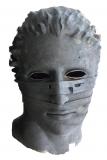Results 1 to 5 of 5
Thread: Item cost breakdown?
-
03-08-2016, 11:19 AM #1Student

- Join Date
- Mar 2016
- Posts
- 2
Item cost breakdown?
Question to those who have printed large objects from:
- metal (bronze or steel)
- wood (not plywood, but actual wood with no additives in it)
- cement (actually soil, clay, Portland cement mix)
Let's assume I need to printed 1 meter by 1 meter by 1 meter object (like a cube) that is curved and have small hollow areas in it.
How much would it cost to produce an item from materials above, considering for each design i want to print 10 copies? (I mean materials, not the printer cost)?
Can such printers be operated by one person, non-technical?
Thank you.
-
03-08-2016, 11:29 AM #2
well to partially answer your question.
A 3d printed metal object that size will cost many thousands of pounds - if not more.
And there aren't that many metal printers around that can handle anything even close to that size.
You can't print with wood without additives as it's the additives (usually pla) that actually allow you to print it in the first place.
And given that there are only a couple of printers that will print a single object that large, you'd struggle to get that done as well and the cost would be ludicrous. Much cheaper to get someone to carve it from a lump of wood with a chainsaw and sand it smooth.
The concrete printers, would probably be pretty cheap - but you have to find someone who has one as they are currently pretty much just prototypes and not mass produced production models.
In short 3d printing is most likely not going to be your best choice for making - what sounds like - very large dice.
-
03-09-2016, 01:40 AM #3
To be added : the infill of a product impacts strongly the cost (material + prod time). Not knowing what you intend, hard to advise.
Start by buying a small printer and learn the ropes.
-
03-09-2016, 01:51 AM #4
^
Have to agree with this...
also, I think too when I first started printing I had grand plans of printing gigantic objects, but the reality of the medium hits you pretty fast - especially time frames (forget about material cost) to print something that large you would need a machine either with a gigantic size nozzle (most certainly larger than 0.4mm!) so it wouldn't look all that smooth (and from the cement printers I've seen we're not about aesthetics as much as functionality at the moment)
Curious is right tho, I don't imagine they are expensive, and really you could almost make one yourself - just build a small machine, get to know it, how the firmware setup works, why you are doing what you're doing - and then apply that all to building a larger machine.Hex3D - 3D Printing and Design http://www.hex3d.com
-
03-09-2016, 05:12 PM #5Staff Engineer

- Join Date
- Jan 2014
- Location
- Oakland, CA
- Posts
- 935
I'm not sure what the point of this question is, but the cost of materials for 3D printing in metals is rather high. Atomized bronze is $13.45/lb here: http://shop.ozometal.com/ and atomized steel is $4.15/lb here: http://www.douglasandsturgess.com/product/FM-1044.html
You have to calculate the price of filling the whole bed of the machine, not just what goes into the part, because recycling the unused powder doesn't work too well, according to what I've heard about it. Of course, this is a very minor part of what it would cost to print your theoretical cube, since the machines cost upward of a million bucks.
As was pointed out above, you can't print in wood - the best you can do is use plastics with some wood dust in them. But wood can be carved with CNC machines; in that case the cost of the wood would depend on the species and how good the wood is, plus the cost of laminating your 1 meter cube from smaller pieces (since it doesn't come that way).
The concrete with dirt in it would be the cheapest option, although how cheap would depend on the ratios involved. I don't think it would work very well, though.
The printers that would do these things vary a lot. Nobody's going to let an untrained person operate their printers, not to mention ultra-expensive metal printers or dangerous CNC machines. But it doesn't usually take more than one person to run one.
Andrew Werby
www.computersculpture.com




 Reply With Quote
Reply With Quote







Extruder not feeding during print,...
Yesterday, 01:59 AM in Tips, Tricks and Tech Help